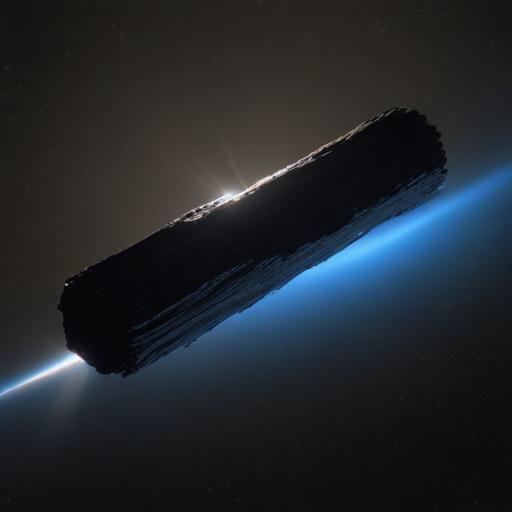A traveler from beyond our solar system is speeding toward the Sun at about 61 kilometers per second, roughly 220,000 kilometers per hour. First spotted in July, this interstellar visitor, designated 3I/Atlas, is only the third such object scientists have observed, following 2017’s ‘Oumuamua and 2019’s 2I/Borisov.
The Hubble Space Telescope has captured an image of 3I/Atlas, offering a rare chance to study its size and chemical makeup up close. Scientists describe it as an object never before seen in detail, providing a fresh window into materials from another star system. While some speculative chatter has circulated about alien technology, researchers stress that 3I/Atlas is most likely a comet-like body, a simple space rock from another neighborhood of the galaxy.
What makes 3I/Atlas intriguing is its appearance and what it can reveal. In the Hubble image, the object looks like a fuzzy snowball, its haze known as a coma formed as the sun warms the surface and drives off dust and gas. There are indications of a comet tail, and the chemical signatures of elements and molecules can be studied with spectroscopy to determine what this interstellar material is made of. Early estimates place its diameter somewhere between a few hundred meters and up to about 5.6 kilometers.
Where is it headed? 3I/Atlas is on a hyperbolic trajectory, meaning it is not gravitationally bound to the Sun and will eventually depart the solar system. It is traveling at more than 200,000 kilometers per hour and will pass through the inner solar system, traveling between Mars’ and Earth’s orbits before swinging back out into interstellar space. Its closest approach to the Sun is expected between October and December, coming within about 210 million kilometers. The closest distance to Earth is projected to be around 270 million kilometers. Exactly how its path will unfold remains uncertain until it makes its way around the far side of the Sun and heads outward again.
Researchers emphasize that, while 3I/Atlas is a remarkable object, there is no evidence to suggest it is anything other than a natural body. “There’s no evidence to point towards [3I/Atlas] being anything other than a really cool space rock that came from outside the solar system,” one scientist notes. The object’s interstellar origin, however, makes it a unique laboratory for comparing other planetary systems with our own.
This visit offers a rare chance to compare materials from another star with those in our own neighborhood, potentially shedding light on how common certain building blocks are in the galaxy. As data pours in from ongoing observations, scientists will refine their understanding of whether this interstellar object resembles comets in our solar system or if it carries different chemical fingerprints altogether.
What to watch for in the coming weeks is how the spectrum of light from 3I/Atlas evolves as it nears and then recedes from the Sun. The nearer it gets, the clearer the signatures of its composition will become, helping researchers answer big questions about the diversity of planetary systems and the processes that shape them. Overall, the discovery of 3I/Atlas underscores humanity’s growing capability to study real material from other stars, a hopeful sign for future explorations of the cosmos.
